Baking Soda Countertop Cleaner: Your secret weapon for a sparkling kitchen is likely already in your pantry! Let’s face it, countertops are the unsung heroes of our homes, enduring everything from spilled coffee to sticky dough. But keeping them clean can feel like a constant battle, especially when harsh chemicals are involved.
For generations, baking soda has been a trusted household staple, not just for baking, but for cleaning too! Our grandmothers knew the power of this simple ingredient, using it to scrub sinks and deodorize refrigerators. It’s a testament to its effectiveness and gentle nature. Think of it as a time-tested, eco-friendly solution passed down through families.
Why do you need this DIY baking soda countertop cleaner trick? Because it’s effective, affordable, and safe! Many commercial cleaners contain harsh chemicals that can damage your countertops and pose health risks. With this simple DIY solution, you can achieve a spotless shine without the worry. I’m going to show you how to create a powerful baking soda countertop cleaner that’s gentle on your surfaces and tough on grime. Get ready to say goodbye to stubborn stains and hello to a sparkling, chemical-free kitchen!
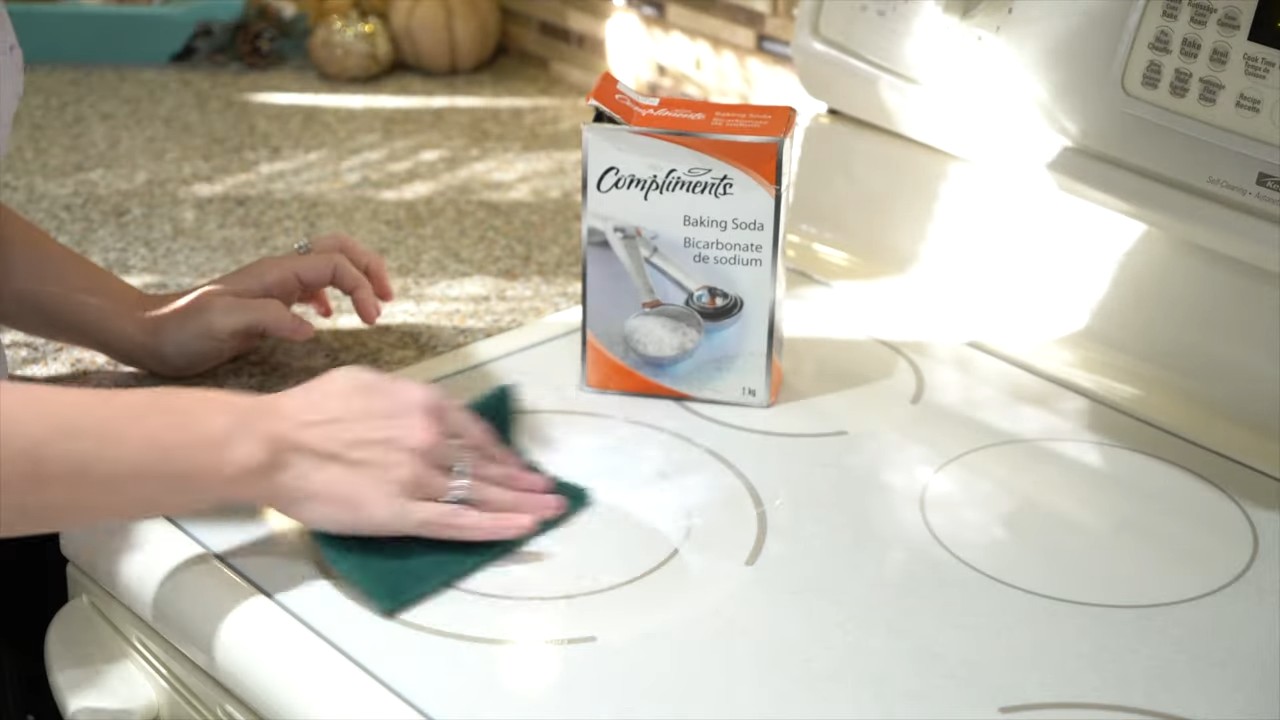
DIY Baking Soda Countertop Cleaner: Sparkling Surfaces, Naturally!
Hey there, fellow DIY enthusiasts! I’m so excited to share my go-to recipe for a countertop cleaner that’s not only incredibly effective but also uses ingredients you probably already have in your pantry. Forget harsh chemicals and expensive store-bought cleaners – we’re going natural and budget-friendly! This baking soda cleaner is perfect for most countertop surfaces, but always test it in an inconspicuous area first, especially on delicate materials like marble or granite.
What You’ll Need: The Essential Ingredients
Before we dive in, let’s gather our supplies. This is a super simple recipe, so the list is short and sweet:
* Baking Soda: The star of the show! Baking soda is a mild abrasive and deodorizer, perfect for scrubbing away grime and neutralizing odors.
* Liquid Dish Soap: A degreasing agent that helps lift dirt and grease from your countertops. I prefer using a natural, unscented dish soap to avoid any harsh chemicals or overpowering fragrances.
* Water: To dilute the mixture and create a workable paste.
* Essential Oil (Optional): For a pleasant scent and added cleaning power. Lemon, tea tree, and lavender are all great choices.
* Spray Bottle (Optional): If you prefer a spray cleaner, we’ll adjust the recipe slightly.
* Cleaning Cloth or Sponge: For wiping down your countertops. Microfiber cloths are my personal favorite!
* Soft-Bristled Brush (Optional): For tackling stubborn stains or textured surfaces.
* Small Bowl or Container: To mix the ingredients.
The Baking Soda Paste Method: For Stubborn Stains and Grime
This method is perfect for tackling those tough, stuck-on messes. The baking soda acts as a gentle abrasive, helping to lift dirt without scratching your countertops.
Step-by-Step Instructions:
1. Mix the Paste: In your small bowl, combine about 1/2 cup of baking soda with a few tablespoons of water. Add the water gradually, mixing until you form a thick paste. The consistency should be similar to toothpaste. If you’re adding essential oil, now’s the time! A few drops (5-10) will do the trick.
2. Apply to the Stain: Using your finger or a spoon, apply the baking soda paste directly to the stain or area you want to clean. Make sure to cover the entire area completely.
3. Let it Sit: This is the key! Allow the paste to sit on the stain for at least 5-10 minutes. For really stubborn stains, you can let it sit for up to 30 minutes. The baking soda needs time to work its magic and break down the grime.
4. Scrub Gently: Using your cleaning cloth, sponge, or soft-bristled brush, gently scrub the area in a circular motion. Avoid applying too much pressure, especially on delicate surfaces.
5. Rinse Thoroughly: Once you’ve scrubbed away the stain, rinse the area thoroughly with clean water. Make sure to remove all traces of the baking soda paste.
6. Dry with a Clean Cloth: Finally, dry the countertop with a clean, dry cloth. This will prevent water spots and leave your surface sparkling.
The Baking Soda Spray Method: For Everyday Cleaning
This method is ideal for quick and easy cleaning of your countertops. It’s perfect for wiping up spills and keeping your surfaces looking their best.
Step-by-Step Instructions:
1. Prepare the Solution: In your spray bottle, combine 1 tablespoon of baking soda, 1 teaspoon of liquid dish soap, and 2 cups of warm water. If you’re using essential oil, add a few drops (5-10) to the mixture.
2. Shake Well: Secure the lid on the spray bottle and shake well to ensure that all the ingredients are thoroughly combined.
3. Spray the Countertop: Spray the baking soda solution directly onto your countertop surface. Don’t over-saturate the area; a light mist is all you need.
4. Wipe Clean: Using your cleaning cloth or sponge, wipe down the countertop in a circular motion.
5. Rinse (Optional): If you prefer, you can rinse the countertop with clean water after wiping it down. This is especially helpful if you’ve used a lot of dish soap.
6. Dry with a Clean Cloth: Dry the countertop with a clean, dry cloth to prevent water spots and leave your surface sparkling.
Tips and Tricks for Sparkling Countertops
Here are a few extra tips to help you get the most out of your DIY baking soda countertop cleaner:
* Test First: As I mentioned earlier, always test the cleaner in an inconspicuous area before applying it to the entire countertop. This is especially important for delicate surfaces like marble or granite.
* Don’t Use on Everything: While this cleaner is great for most surfaces, avoid using it on unsealed wood, as it can damage the finish.
* Adjust the Consistency: Feel free to adjust the amount of water you use to create the perfect paste or spray solution.
* Add Vinegar (with caution!): For extra cleaning power, you can add a small amount of white vinegar to the spray solution. However, be careful when mixing vinegar with baking soda, as it can create a fizzing reaction. Always add the vinegar slowly and in a well-ventilated area. Never mix vinegar and baking soda in a closed container, as the pressure could cause it to explode.
* Essential Oil Blends: Experiment with different essential oil blends to create your own custom scent. Some of my favorites include lemon and lavender, tea tree and eucalyptus, and orange and clove.
* Clean Regularly: The best way to keep your countertops clean is to wipe them down regularly. A quick wipe with the baking soda spray solution after each meal can prevent stains and grime from building up.
* For Burnt-On Food: If you have burnt-on food on your stovetop (assuming it’s a countertop stovetop), create a thick paste of baking soda and water, apply it to the burnt area, and let it sit overnight. In the morning, scrub gently with a non-scratch pad.
* Tackle Grout: This baking soda paste also works wonders on grout! Apply the paste to the grout lines, let it sit for a few minutes, and then scrub with a grout brush. Rinse thoroughly.
* Odor Removal: Baking soda is a natural deodorizer. If your countertops have absorbed any unpleasant odors, sprinkle a thin layer of baking soda over the surface, let it sit for a few hours, and then vacuum or wipe it away.
* Prevent Mold and Mildew: In damp areas like around the sink, baking soda can help prevent mold and mildew growth. Mix baking soda with a little water to form a paste, apply it to the affected area, let it sit for a few minutes, and then scrub and rinse.
* Storage: Store the baking soda spray solution in a cool, dark place. It should last for several weeks. The baking soda paste is best used immediately, as it can dry out over time.
* Safety First: While baking soda is a natural and non-toxic ingredient, it’s still important to exercise caution when cleaning. Avoid getting the cleaner in your eyes, and always wash your hands thoroughly after cleaning.
Why I Love This DIY Cleaner
I’ve been using this baking soda countertop cleaner for years, and I absolutely love it! It’s effective, affordable, and eco-friendly. Plus, it’s so easy to make! I feel good knowing that I’m cleaning my home with natural ingredients that are safe for my family and the environment. Give it a try, and I think you’ll love it too! Happy cleaning!
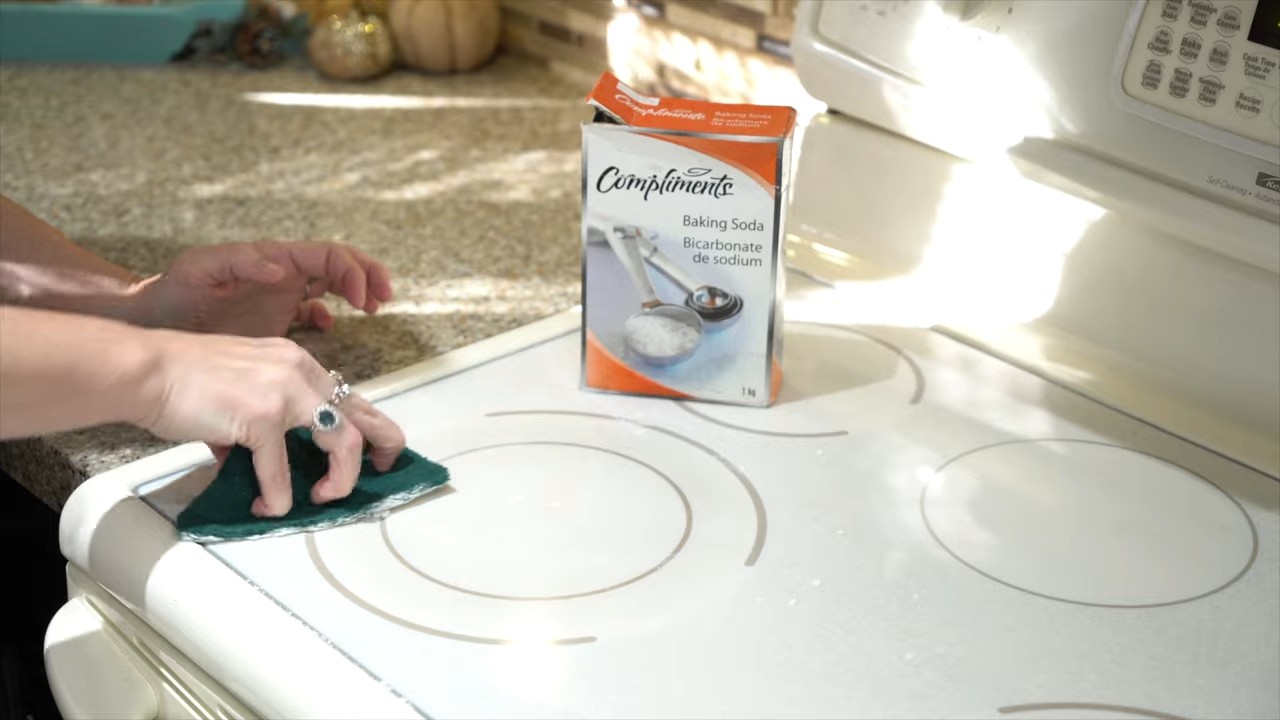
Conclusion
So, there you have it! This simple yet incredibly effective baking soda countertop cleaner is a game-changer for anyone looking to ditch harsh chemicals and embrace a more natural and budget-friendly cleaning solution. We’ve walked you through the easy steps, highlighting the power of baking soda’s gentle abrasiveness and deodorizing properties. Forget those expensive, store-bought cleaners filled with questionable ingredients. This DIY method is not only better for your health and the environment, but it’s also incredibly satisfying to create something so useful with ingredients you likely already have in your pantry.
Why is this a must-try? Because it works! It cuts through grease, lifts stains, and leaves your countertops sparkling clean without scratching or damaging delicate surfaces. Plus, the subtle, clean scent is a welcome change from the overpowering fragrances of commercial cleaners. Think about it: you’re saving money, reducing your exposure to harmful chemicals, and contributing to a more sustainable lifestyle, all with one simple recipe.
But don’t just take our word for it. We encourage you to experiment and find what works best for your specific needs and countertop materials. For example, if you have particularly stubborn stains, try letting the baking soda paste sit for a longer period before scrubbing. Or, if you prefer a more fragrant cleaner, add a few drops of your favorite essential oil, such as lemon, lavender, or tea tree, to the mixture. Just be sure to test the essential oil on an inconspicuous area first to ensure it doesn’t discolor your countertop. Another variation involves adding a small amount of castile soap to the baking soda paste for extra cleaning power. This is particularly useful for greasy messes.
Ultimately, the beauty of this DIY baking soda countertop cleaner lies in its simplicity and adaptability. It’s a blank canvas for you to customize and perfect to suit your individual preferences and cleaning challenges.
We are confident that once you try this method, you’ll be hooked. It’s a simple, effective, and eco-friendly way to keep your countertops looking their best. So, ditch the chemicals, grab your baking soda, and get ready to experience the joy of a truly clean and healthy home.
Now, we want to hear from you! Have you tried this baking soda countertop cleaner? What variations did you use? What were your results? Share your experiences and tips in the comments below. Let’s build a community of clean-living enthusiasts who are passionate about natural and effective cleaning solutions. Your feedback is invaluable and will help others discover the power of this simple DIY trick. We can’t wait to hear your success stories!
Frequently Asked Questions (FAQ)
Is baking soda safe to use on all countertop surfaces?
While baking soda is generally safe for most countertop surfaces, it’s crucial to exercise caution and test it on an inconspicuous area first, especially if you have delicate or porous materials like marble, granite, or certain types of natural stone. Baking soda is mildly abrasive, and while it’s unlikely to cause significant damage, repeated use on sensitive surfaces could potentially lead to dulling or scratching over time. For these types of countertops, consider using a gentler cleaning solution specifically designed for natural stone. If you’re unsure about your countertop material, consult the manufacturer’s recommendations before using any cleaning product, including baking soda.
How do I make the baking soda countertop cleaner paste?
Making the paste is incredibly simple. In a small bowl, combine baking soda with water until you achieve a thick, spreadable consistency. Start with a small amount of water and gradually add more until you reach the desired texture. The ideal paste should be thick enough to cling to the countertop surface without being too runny. A good starting point is about 3 parts baking soda to 1 part water, but you can adjust the ratio as needed.
Can I add essential oils to the baking soda countertop cleaner?
Yes, you can definitely add essential oils to your baking soda countertop cleaner for a pleasant scent and added cleaning benefits. Lemon, lavender, tea tree, and eucalyptus are popular choices due to their antibacterial and antifungal properties. However, it’s essential to use essential oils with caution and test them on an inconspicuous area first, as some oils can potentially discolor or damage certain countertop surfaces. Start with just a few drops of your chosen essential oil and mix it thoroughly into the baking soda paste.
How long should I leave the baking soda paste on the countertop?
The amount of time you leave the baking soda paste on the countertop depends on the severity of the stain or grime. For light cleaning, a few minutes is usually sufficient. For more stubborn stains, you can leave the paste on for up to 15-20 minutes. However, avoid leaving it on for extended periods, as the baking soda can dry out and become difficult to remove. Always test the paste on an inconspicuous area first to ensure it doesn’t damage the surface.
How do I remove the baking soda paste from the countertop?
After allowing the baking soda paste to sit on the countertop for the desired amount of time, use a damp sponge or cloth to gently scrub the surface. Rinse the sponge or cloth frequently to remove any residue. Once you’ve scrubbed the entire area, use a clean, damp cloth to wipe away any remaining baking soda paste. Finally, dry the countertop with a clean towel to prevent water spots.
What if the baking soda paste leaves a white residue?
If you notice a white residue after removing the baking soda paste, it’s likely due to excess baking soda that wasn’t completely rinsed away. Simply wipe the countertop again with a clean, damp cloth to remove the residue. You may need to repeat this process a few times to ensure all the baking soda is gone.
Can I use this baking soda countertop cleaner on stainless steel appliances?
While baking soda can be used on stainless steel, it’s important to use it with caution and avoid excessive scrubbing, as it can potentially scratch the surface. Always test the baking soda paste on an inconspicuous area first. For stainless steel, it’s often best to use a very diluted baking soda solution or a cleaner specifically designed for stainless steel.
How often should I use this baking soda countertop cleaner?
The frequency of using this baking soda countertop cleaner depends on your cleaning habits and the amount of use your countertops receive. For general cleaning, once or twice a week is usually sufficient. However, you may need to clean more frequently if you have spills or stains.
Is this baking soda countertop cleaner safe for food preparation surfaces?
Yes, this baking soda countertop cleaner is generally safe for food preparation surfaces, as baking soda is a non-toxic and food-grade ingredient. However, it’s crucial to thoroughly rinse the countertop with clean water after cleaning to remove any baking soda residue before preparing food.
Can I store leftover baking soda countertop cleaner paste?
While you can store leftover baking soda paste in an airtight container, it’s best to make a fresh batch each time you clean. The paste can dry out over time and become less effective. Plus, it only takes a few minutes to whip up a new batch, so it’s usually more convenient to make it fresh.


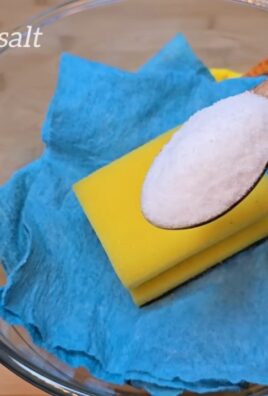
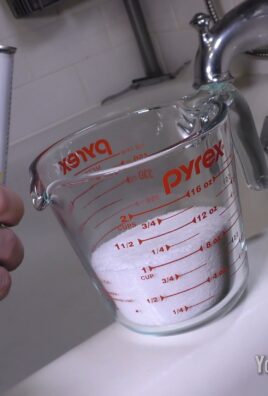
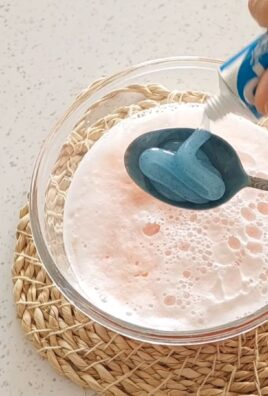
Leave a Comment